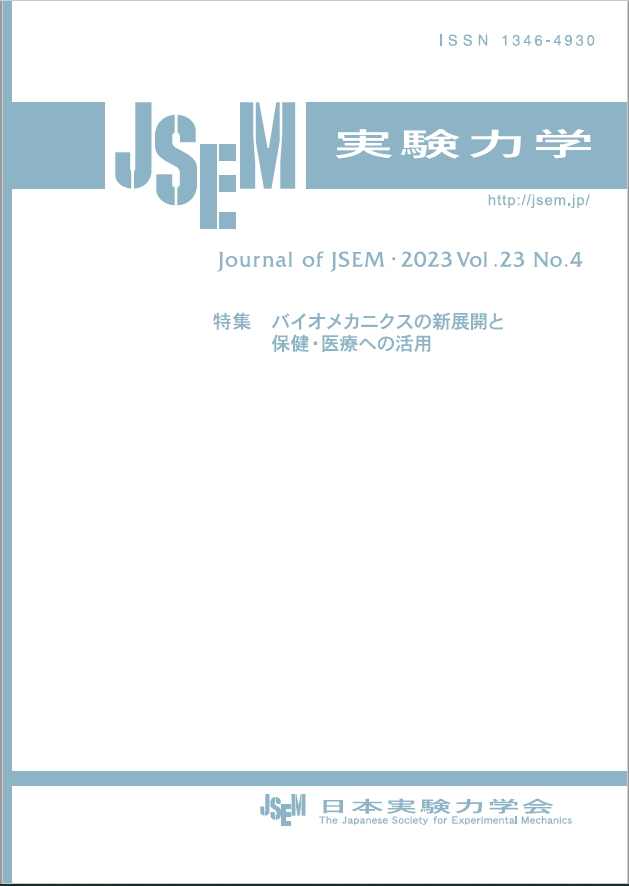Current issue
Special Issue on New developments in Biomechanics and its application to Health and Clinical Sciences
Displaying 1-9 of 9 articles from this issue
- |<
- <
- 1
- >
- >|
Foreword
-
Article type: other
2023 Volume 23 Issue 4 Pages 271
Published: December 20, 2023
Released on J-STAGE: February 08, 2024
Download PDF (437K)
Special Issue on New developments in Biomechanics and its application to Health and Clinical Sciences
-
Article type: other
2023 Volume 23 Issue 4 Pages 272
Published: December 20, 2023
Released on J-STAGE: February 08, 2024
Download PDF (842K)
Review
-
Article type: review-article
2023 Volume 23 Issue 4 Pages 273-276
Published: December 20, 2023
Released on J-STAGE: February 08, 2024
Download PDF (1806K)
Original Papers
-
Article type: research-article
2023 Volume 23 Issue 4 Pages 277-284
Published: December 20, 2023
Released on J-STAGE: February 08, 2024
Download PDF (3230K) -
Article type: research-article
2023 Volume 23 Issue 4 Pages 285-289
Published: December 20, 2023
Released on J-STAGE: February 08, 2024
Download PDF (2637K) -
Article type: research-article
2023 Volume 23 Issue 4 Pages 290-295
Published: December 20, 2023
Released on J-STAGE: February 08, 2024
Download PDF (6560K) -
Article type: research-article
2023 Volume 23 Issue 4 Pages 296-303
Published: December 20, 2023
Released on J-STAGE: February 08, 2024
Download PDF (2377K)
Original Papers
-
Pressure Measurement and Flow Visualization of Shock Wave Propagation in Air and Water with a FilterArticle type: research-article
2023 Volume 23 Issue 4 Pages 304-309
Published: December 20, 2023
Released on J-STAGE: February 08, 2024
Download PDF (14734K) -
Article type: research-article
2023 Volume 23 Issue 4 Pages 310-315
Published: December 20, 2023
Released on J-STAGE: February 08, 2024
Download PDF (9696K)
- |<
- <
- 1
- >
- >|
